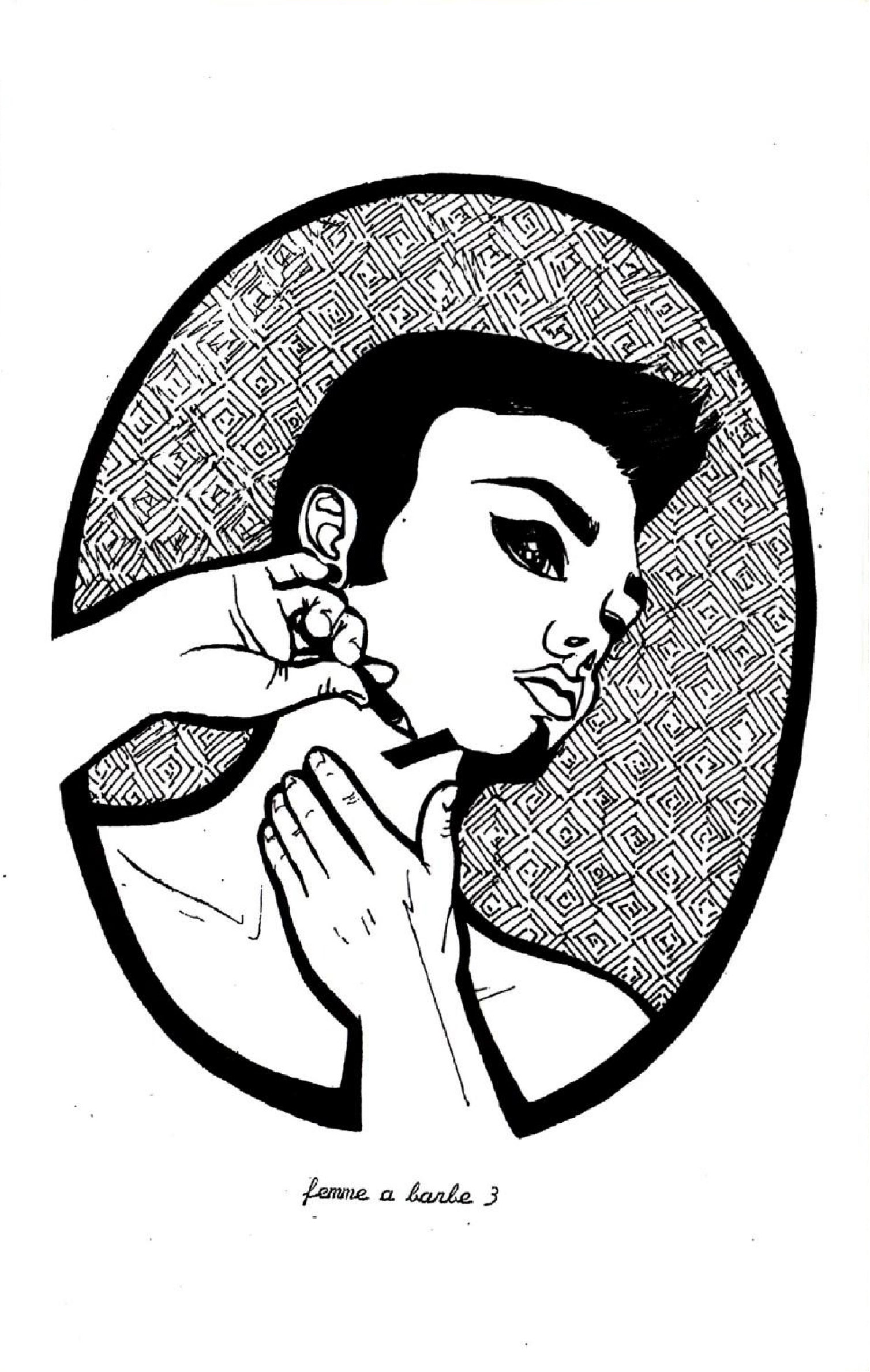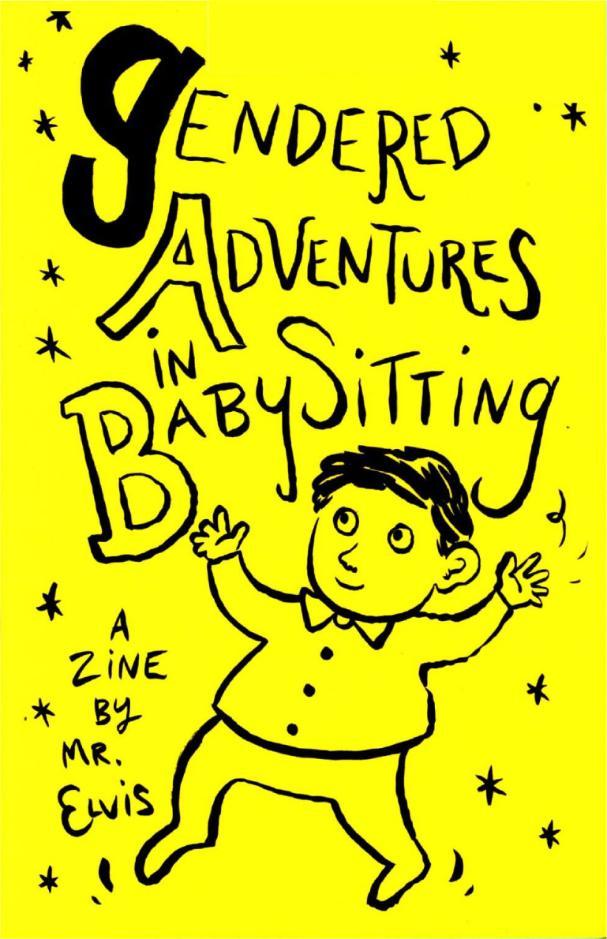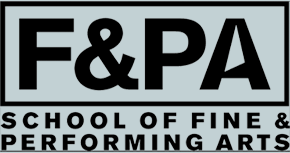Alive & Yelling: Trans Zines and Radical Subcultures
Curated by Basil Bennett-Levy and Sam Trollo, guided by Madeline Veitch and Anastasia James
September 15 – December 9, 2018
Seminar Room

Jenna Braeger (editor), Femme a Barbe, after 2010, photocopy on paper
Zines, short for fanzines, are D.I.Y. publications that have historically been popular among marginalized communities as a means of self-expression and knowledge sharing. Unlike authors of mainstream publications, zinesters retain complete autonomy over what they can say; there are no editors, publishers, publication companies, or marketing departments to censor their work. Zines typically have a small print circulation and are traded or sold close to production cost, not for profit.
Zines have deep historical roots in the pamphlets and chapbooks of 19th and early 20th centuries’ social justice movements and subcultures—feminists, anti-lynching activists, and LGBTQ communities to name a few. Though we now have innumerable ways to share knowledge digitally, from YouTube videos to blogs and social media, zines still hold a unique power to amplify our voices—in analog, with no room for “comments” from anonymous readers.
Zines are anti-capitalist, anti-censorship, unapologetic, ‘I-have-something-to-say-and-you-can’t-stop-me,’ We create them in the act of becoming, and we create them to reach others and say, “I see you, you are f---ing fantastic.” We create them to build networks of support based on friendship and inclusion, to write a better world into existence.
Trans zines address the daily lives of trans-identified people and embrace the diversity and intersectionality of the trans community, which is often oversimplified by the media and excludes the existence of non-binary, intersex, and gender fluid folk. The zines included in this exhibition speak to the everyday lived trans experience contrasted with portrayals in popular media.

Elvis Bakaitis, Gendered Adventures in Babysitting, circa 2016, photocopy on paper
Alive & Yelling: Trans Zines and Radical Subcultures
Curated by Basil Bennett-Levy and Sam Trollo, guided by Madeline Veitch and Anastasia James
September 15 – December 9, 2018
Seminar Room

Jenna Braeger (editor), Femme a Barbe, after 2010, photocopy on paper
Zines, short for fanzines, are D.I.Y. publications that have historically been popular among marginalized communities as a means of self-expression and knowledge sharing. Unlike authors of mainstream publications, zinesters retain complete autonomy over what they can say; there are no editors, publishers, publication companies, or marketing departments to censor their work. Zines typically have a small print circulation and are traded or sold close to production cost, not for profit.
Zines have deep historical roots in the pamphlets and chapbooks of 19th and early 20th centuries’ social justice movements and subcultures—feminists, anti-lynching activists, and LGBTQ communities to name a few. Though we now have innumerable ways to share knowledge digitally, from YouTube videos to blogs and social media, zines still hold a unique power to amplify our voices—in analog, with no room for “comments” from anonymous readers.
Zines are anti-capitalist, anti-censorship, unapologetic, ‘I-have-something-to-say-and-you-can’t-stop-me,’ We create them in the act of becoming, and we create them to reach others and say, “I see you, you are f---ing fantastic.” We create them to build networks of support based on friendship and inclusion, to write a better world into existence.
Trans zines address the daily lives of trans-identified people and embrace the diversity and intersectionality of the trans community, which is often oversimplified by the media and excludes the existence of non-binary, intersex, and gender fluid folk. The zines included in this exhibition speak to the everyday lived trans experience contrasted with portrayals in popular media.

Elvis Bakaitis, Gendered Adventures in Babysitting, circa 2016, photocopy on paper
SUNY New Paltz 1 Hawk Drive, New Paltz, NY 12561
845.257.3844
For more information contact us at [email protected]

